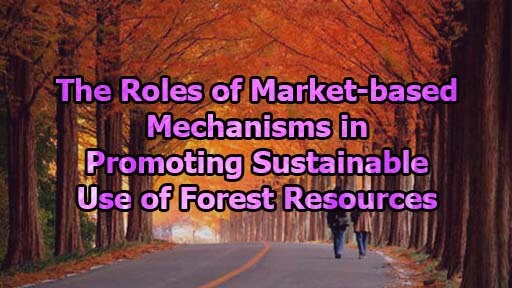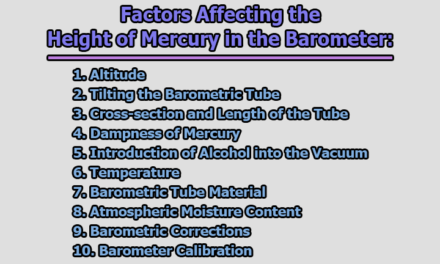The Roles of Market-based Mechanisms in Promoting Sustainable Use of Forest Resources:
Forests are essential for the health of the planet, as they provide a range of ecological services, including carbon storage, biodiversity conservation, and water regulation. However, forests are under threat due to human activities such as deforestation, degradation, and conversion to other land uses. Sustainable Forest Management (SFM) is necessary to ensure the continued provision of forest services and to meet the needs of current and future generations. Market-based mechanisms have been increasingly used to promote SFM by providing economic incentives for sustainable forest practices. In this article, we will examine the roles of market-based mechanisms in promoting the sustainable use of forest resources.
1. Providing economic incentives for SFM: Market-based mechanisms such as payments for ecosystem services (PES) and forest certification schemes provide economic incentives for SFM. These mechanisms reward forest owners and managers who adopt sustainable practices, such as reducing deforestation rates and enhancing carbon sequestration.
2. Encouraging forest conservation: Market-based mechanisms encourage forest conservation by creating economic benefits for forest owners and managers who preserve forests rather than converting them to other land uses. This can help to reduce deforestation rates and conserve forest biodiversity.
3. Promoting reforestation and afforestation: Market-based mechanisms can promote reforestation and afforestation by providing economic incentives for planting trees and restoring degraded forests. This can help to increase carbon sequestration and restore forest ecosystems.
4. Supporting sustainable forest product markets: Market-based mechanisms can support sustainable forest product markets by promoting certification of forest products and creating demand for sustainably produced goods. This can encourage forest owners and managers to adopt sustainable practices.
5. Facilitating access to finance: Market-based mechanisms such as green bonds and forest carbon funds can facilitate access to finance for SFM activities. This can help to overcome financial barriers to sustainable forest practices.
6. Enabling stakeholder participation: Market-based mechanisms can enable stakeholder participation in SFM activities, such as through participatory forest management and community-based forest enterprises. This can help to ensure that local communities are involved in decision-making and benefit from sustainable forest practices.
7. Promoting transparency and accountability: Market-based mechanisms can promote transparency and accountability in SFM activities by requiring forest owners and managers to report on their sustainability practices and impacts. This can help to ensure that sustainable practices are being implemented and that stakeholders are informed about the management of forest resources.
8. Enhancing market access: Market-based mechanisms can enhance market access for sustainably produced forest products by providing certification and labeling schemes. This can help to differentiate sustainably produced goods from those that are not and create market opportunities for sustainably managed forests.
9. Encouraging sustainable land use practices: Market-based mechanisms can encourage sustainable land use practices by creating economic incentives for forest owners and managers to adopt sustainable practices such as agroforestry and conservation agriculture. This can help to reduce deforestation rates and enhance biodiversity.
10. Supporting REDD+ implementation: Market-based mechanisms such as REDD+ (Reducing Emissions from Deforestation and Forest Degradation) can provide economic incentives for SFM activities that reduce carbon emissions from deforestation and forest degradation. This can help to mitigate climate change and promote sustainable forest practices.
11. Fostering public-private partnerships: Market-based mechanisms can foster public-private partnerships for SFM activities. This can help to leverage private sector investment in SFM activities and promote collaboration between the public and private sectors.
12. Promoting innovation: Market-based mechanisms can promote innovation in SFM activities by creating economic incentives for the adoption of new technologies and practices. This can help to improve the efficiency and effectiveness of sustainable forest practices.
13. Enhancing biodiversity conservation: Market-based mechanisms can enhance biodiversity conservation by creating economic incentives for forest owners and managers to preserve and enhance biodiversity in forest ecosystems. This can help to protect endangered species and maintain ecological balance.
14. Supporting Indigenous and local communities: Market-based mechanisms can support Indigenous and local communities by recognizing and rewarding their traditional forest management practices and involving them in decision-making processes. This can help to protect their rights, culture, and livelihoods.
15. Facilitating international cooperation: Market-based mechanisms can facilitate international cooperation in SFM activities by creating a framework for global collaboration and coordination. This can help to address transboundary issues such as illegal logging, timber trade, and climate change.
16. Encouraging responsible investment: Market-based mechanisms can encourage responsible investment in SFM activities by promoting sustainable investment criteria and screening mechanisms. This can help to attract capital flows to sustainable forest projects and avoid investment in harmful activities.
17. Promoting sustainable tourism: Market-based mechanisms can promote sustainable tourism in forest ecosystems by creating economic incentives for sustainable tourism practices and promoting conservation and education initiatives. This can help to diversify income streams for forest communities and raise awareness about the importance of forest conservation.
18. Enhancing forest governance: Market-based mechanisms can enhance forest governance by creating a framework for sustainable forest management and monitoring compliance with sustainability standards. This can help to improve transparency, accountability, and legitimacy in forest management.
19. Providing alternative livelihoods: Market-based mechanisms can provide alternative livelihoods for forest-dependent communities by creating economic opportunities in sustainable forest activities such as eco-tourism, agroforestry, and non-timber forest product (NTFP) harvesting. This can help to reduce pressure on forest resources and promote poverty reduction.
20. Strengthening capacity building: Market-based mechanisms can strengthen capacity building in SFM activities by providing training, technical assistance, and knowledge-sharing opportunities. This can help to improve skills and expertise in sustainable forest management and promote innovation.
21. Improving monitoring and evaluation: Market-based mechanisms can improve the monitoring and evaluation of SFM activities by establishing robust monitoring and evaluation systems and reporting mechanisms. This can help to assess the effectiveness of sustainable forest practices and identify areas for improvement.
22. Supporting smallholders: Market-based mechanisms can support smallholders in SFM activities by creating economic opportunities and providing access to technical assistance, finance, and markets. This can help to empower smallholders and promote sustainable forest practices.
23. Promoting corporate responsibility: Market-based mechanisms can promote corporate responsibility in SFM activities by creating incentives for companies to adopt sustainable forest practices and align their business models with sustainability goals. This can help to promote responsible business conduct and reduce negative impacts on forest ecosystems.
24. Strengthening regulatory frameworks: Market-based mechanisms can strengthen regulatory frameworks for SFM activities by promoting the development of legal and institutional frameworks that support sustainable forest practices. This can help to improve compliance with sustainability standards and promote effective forest governance.
25. Encouraging knowledge sharing: Market-based mechanisms can encourage knowledge sharing in SFM activities by promoting the exchange of information and best practices among stakeholders. This can help to enhance learning and innovation in sustainable forest management and promote continuous improvement.
In summary, market-based mechanisms play a crucial role in promoting the sustainable use of forest resources by providing economic incentives for sustainable forest practices, creating market opportunities for sustainably produced forest products, and fostering stakeholder participation, innovation, and capacity building. By promoting SFM activities, market-based mechanisms can help to mitigate climate change, conserve biodiversity, support local livelihoods, and promote responsible business conduct. However, it is essential to ensure that market-based mechanisms are designed and implemented in a way that safeguards social and environmental integrity and respects the rights and interests of forest communities. Only by balancing economic, social, and environmental objectives can we achieve truly sustainable forest management.
References:
- Angelsen, A., & Wunder, S. (2003). Exploring the forest-poverty link: key concepts, issues, and research implications. CIFOR Occasional Paper No. 40.
- Brouwer, R., & Engel, S. (2017). The role of payments for ecosystem services in landscape restoration. Land Use Policy, 69, 257-265.
- (2020). State of the World’s Forests 2020. Rome: Food and Agriculture Organization of the United Nations.
- Houghton, R. A. (2005). Tropical deforestation is a source of greenhouse gas emissions. In P. Moutinho & S. Schwartzman (Eds.), Tropical deforestation and climate change (pp. 13-20). Belém: IPAM.
- Lele, S., & Springate-Baginski, O. (2013). Market-based conservation initiatives in the global south. London: Routledge.
- Muradian, R., Corbera, E., Pascual, U., Kosoy, N., May, P. H., & Seyfang, G. (2010). Reconciling theory and practice: An alternative conceptual framework for understanding payments for environmental services. Ecological Economics, 69(6), 1202-1208.
- Pagiola, S., & Platais, G. (2007). Payments for environmental services: from theory to practice. Washington, DC: World Bank.
- Poudyal, M., & Vacik, H. (2018). Payment for ecosystem services and forest certification: Complementary approaches for enhancing forest sustainability. Forest Policy and Economics, 90, 44-51.
- Wunder, S. (2005). Payments for environmental services: some nuts and bolts. CIFOR Occasional Paper No. 42.
- Wunder, S. (2015). Revisiting the concept of payments for environmental services. Ecological Economics, 117, 234-243.
- Abson, D. J., Dougill, A. J., Stringer, L. C., & Williams, J. (2014). Socioeconomic dynamics of ecosystem services. In Ecosystem Services: Global issues, local practices (pp. 29-48). Springer, Dordrecht.
- Agrawal, A., & Redford, K. (2009). Conservation and displacement: An overview. Conservation and Society, 7(1), 1-10.
- Barton, D. N., Rusch, G. M., & Martens, P. (2013). Payment for ecosystem services in Asia: A review of schemes and approaches. Asia-Pacific Journal of Rural Development, 23(1), 53-74.
- DeFries, R. S., Hansen, A., Newton, A. C., & Hansen, M. C. (2005). Increasing isolation of protected areas in tropical forests over the past twenty years. Ecological Applications, 15(1), 19-26.
- Duraiappah, A. K. (2004). Ecosystems and human well-being: A framework for assessment. Island Press.
- Fisher, B., Turner, R. K., & Morling, P. (2009). Defining and classifying ecosystem services for decision-making. Ecological Economics, 68(3), 643-653.
- Karsenty, A., & Ongolo, S. (2017). REDD+ as a “paradoxical commodity”: A political economy analysis. International Forestry Review, 19(S1), 55-68.
- Meinzen-Dick, R. S., Brown, L. R., Feldstein, H. S., Goyal, A., & Quisumbing, A. R. (1997). Gender, property rights, and natural resources. World Development, 25(8), 1303-1315.
- Milder, J. C., Hart, A. K., Dobie, P., Minai, J., Zaleski, C., Smith, J., … & Griscom, B. W. (2020). Methodological guidance for designing and implementing payment for ecosystem services mechanisms for forest conservation. Environmental Science & Policy, 112, 302-312.
- Scherr, S. J., & McNeely, J. A. (2008). Biodiversity conservation and agricultural sustainability: Towards a new paradigm of ‘ecoagriculture’ landscapes. Philosophical Transactions of the Royal Society B: Biological Sciences, 363(1491), 477-494.
- Sills, E. O., de Sassi, C., & Sunderlin, W. D. (2016). REDD+ on the rocks? Conflict over forest and politics of justice in Indonesia. World Development, 78, 50-63.
- Sunderlin, W. D., Hatcher, J., Liddle, M., Okarda, B., & Resosudarmo, I. A. P. (2015). Indonesia’s forest moratorium: Impacts and next steps. Forest Policy and Economics, 61, 1-11.
- Tschakert, P., Tutu, R., Alidu, L., Bawa, T., Seidu, R., Saito-Jensen, M., … & Yakubu, H. (2019). Forest tenure and rights of access in West Africa: Lessons from Ghana and Burkina Faso. World Development, 120, 91-104.
- Wunder, S. (2019). Paying for nature’s services: A beginner’s guide. Routledge.
- Zahawi, R. A., & Lamb, D. (2019). Forest landscape restoration: progress in the last decade and remaining challenges. Current Opinion in Environmental Sustainability, 38, 71-77.

Former Student at Rajshahi University










